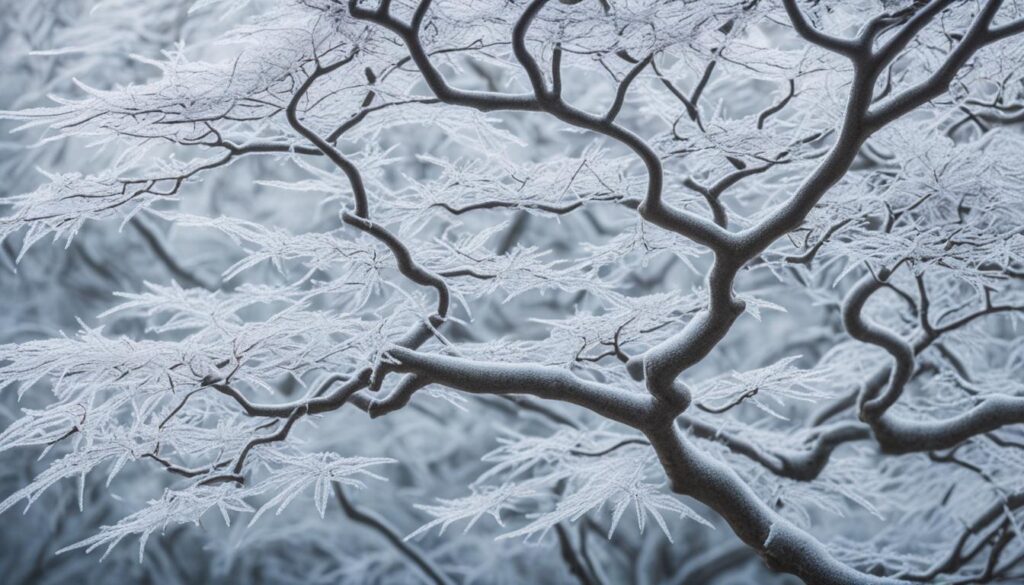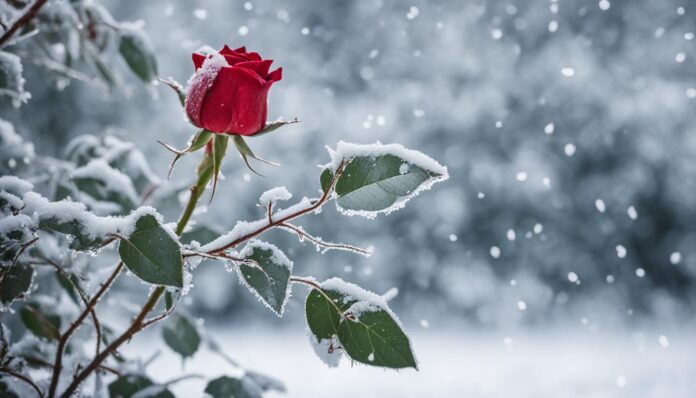The winter season may bring cold temperatures and dormant gardens, but there is still beauty to be found among the chilly landscape. One such marvel is the Christmas rose, also known as Helleborus. These stunning winter blooms have the power to bring joy and color to your garden during this festive time of year.
Unlike most plants that lay dormant in the winter, Christmas roses burst into bloom, painting the snow-covered ground with their delicate petals. These enchanting flowers typically grace us with their presence in late winter or early spring, making them a delightful addition to any seasonal garden.
Learning how to care for Christmas roses is essential to ensure their longevity and beauty. One important aspect of their maintenance routine is fertilization. By fertilizing these winter gems in early spring and after the flowers have faded, you can help promote better blooms and store energy for their future growth.
When it comes to fertilizing Christmas roses, it is recommended to use a balanced fertilizer with equal amounts of nitrogen, phosphorus, and potassium, or a fertilizer higher in phosphorus content for enhanced blooming abilities. However, caution must be exercised as overfertilization can be harmful. It is essential to follow the instructions on the fertilizer package to ensure the well-being of these exquisite flowers.
Moreover, Christmas roses have a dormant phase during winter and summer when they do not require fertilizer. Planting them in the fall and providing fertilizer during the planting process can give them a healthy head start. With proper fertilization at the right times and in the right amounts, you can enhance the beauty of your Christmas roses and ensure their longevity.
Key Takeaways:
- The Christmas rose, or Helleborus, is a winter-blooming flower that adds color and beauty to seasonal gardens.
- Fertilizing Christmas roses in early spring and after the flowers have faded can promote better blooms and ensure their health.
- It is important to use a balanced fertilizer with equal amounts of nitrogen, phosphorus, and potassium, or a fertilizer higher in phosphorus content for enhanced blooming abilities.
- Overfertilization can be harmful, so it is crucial to follow the instructions on the fertilizer package.
- Planting Christmas roses in the fall and providing fertilizer during the planting process can give them a healthy start.
Winter-Blooming Flowers for Seasonal Gardens
In addition to Christmas roses, there are several other flowers that can brighten up your seasonal garden during winter. Here are some popular choices that can add a burst of color and beauty to your landscape:
Early Bloomers
- Crocus
- Leucojum
- English Primrose
These flowers bloom early in the season and can thrive even when there is still snow on the ground.
Winter Blooms
- Viola
- Camellia
- Ornamental Cabbage and Kale
These flowers can withstand light frosts and continue to bloom through fall and winter. They provide a splash of color and texture to your garden when other plants are dormant.
Hellebores Niger, or Christmas roses, are another great option for winter gardening. They start to bloom around Christmas and have beautiful white flowers, adding a touch of elegance to your garden.
Other Winter-Blooming Flowers
- Winter Aconite
- Pieris Japonica
- Witch Hazel
- Snowdrop
- Cyclamen
- Winter Jasmine
- Scilla
These flowers offer a range of colors, shapes, and sizes that can enhance the beauty and interest of your winter garden.
With the right selection of winter-blooming flowers, you can create a colorful and vibrant garden even in the midst of winter.
| Flower | Blooming Season | Color |
|---|---|---|
| Crocus | Early winter to early spring | Purple, yellow, white |
| Leucojum | Late winter to early spring | White |
| English Primrose | Winter to early spring | Various shades |
| Viola | Winter to early spring | Purple, yellow, white |
| Camellia | Winter to early spring | Various shades |
| Ornamental Cabbage and Kale | Winter to early spring | Red, pink, white, purple |
| Hellebores Niger | Winter | White |
| Winter Aconite | Late winter to early spring | Yellow |
| Pieris Japonica | Winter to early spring | White, pink |
| Witch Hazel | Winter to early spring | Various shades |
| Snowdrop | Winter to early spring | White |
| Cyclamen | Winter | Various shades |
| Winter Jasmine | Late winter to early spring | Yellow |
| Scilla | Winter to early spring | Blue |
The Beauty of Japanese Maples in Winter

Japanese maples are known for their stunning colors in the fall, but they can also provide beauty in the winter months. While most other trees have shed their leaves, Japanese maples start to turn and display vibrant colors. Their fine branching structure and delicate leaves add a unique touch to any garden, even in the winter.
The timing of their color change makes them a prime candidate for adding winter interest to your garden. Whether covered in snow or standing against the cold winter sky, Japanese maples bring a touch of beauty and elegance to the winter season. Their ability to withstand cold weather makes them a great choice for gardens in colder climates, where they can continue to provide visual appeal even when other plants are dormant.
“Japanese maples bring a touch of beauty and elegance to the winter season.”
Hardy Cyclamen and Italian Arum: Delicate Beauties in Winter
Hardy Cyclamen and Italian Arum are two delicate flowers that can add charm to your garden during the winter season.
Hardy Cyclamen, also known as fall-blooming Cyclamen, features dainty flowers that emerge in the fall and continue to bloom through the winter. The plant goes dormant in the summer and re-emerges in the fall, making it a great choice for winter gardening.
Italian Arum, on the other hand, is known for its unique foliage and flowers. Its fresh foliage emerges in early fall and remains throughout the winter, providing a highlight in the garden.
Both of these plants can tolerate cold weather and add visual interest to your winter landscape. Planting them in shaded areas or under trees can create a beautiful display of winter blooms.
Other Winter Stars: Winter Heath, Winter Jasmine, and Winterberry
When it comes to winter blooms and garden beauty, there are a few stars that shine brightly even in the coldest months. One of these stars is Winter Heath, also known as Erica. This shrubby evergreen plant graces gardens with its stunning display of pink blossoms from January to March, even under the snow. It adds a touch of vibrant color and beauty to the winter landscape.
Another winter star is the resilient Winter Jasmine. Despite its delicate appearance, this tough plant boasts bright yellow flowers that adorn its arching branches in late winter. It is a cold-weather plant that withstands the harshest winter conditions, making it an ideal choice for adding beauty to your garden, even during the coldest months of the year.
One more winter treasure is Winterberry. This deciduous holly plant may lose its leaves in winter, but it retains its heavy berry-laden branches, which provide a pop of color against the winter landscape. To ensure the production of berries, it is important to plant a “male” pollinator nearby. The vibrant berries add a festive touch to your winter garden and attract birds with their beauty and nourishment.
Winter Heath, Winter Jasmine, and Winterberry are just a few examples of the cold-weather plants that can bring life and beauty to your garden during the winter season. Their ability to thrive and bloom in the coldest months proves that winter is not a time of barrenness, but an opportunity to witness the resilience and magnificence of nature’s creations.
FAQ
How do I care for Christmas roses?
Caring for Christmas roses involves fertilizing them in early spring and after the flowers have faded. It is recommended to use a balanced fertilizer with equal amounts of nitrogen, phosphorus, and potassium, or a fertilizer higher in phosphorus content for better blooming abilities. Overfertilization should be avoided, and it is important to follow the instructions on the fertilizer package. Christmas roses have a dormant phase during winter and summer when they do not need fertilizer. Planting them in fall and providing fertilizer during the planting process can give them a healthy start.
What other flowers can I plant for winter blooms?
In addition to Christmas roses, you can also consider planting flowers such as crocus, Leucojum, English Primrose, viola, Camellia, Ornamental Cabbage and Kale, Hellebores Niger (Christmas roses), Winter Aconite, Pieris Japonica, Witch Hazel, snowdrop, Cyclamen, Winter Jasmine, and Scilla. These flowers can add color and beauty to your garden during the winter season.
Can Japanese maples provide winter beauty?
Yes, Japanese maples can provide beauty in the winter months. While most other trees have shed their leaves, Japanese maples start to turn and display vibrant colors. Their fine branching structure and delicate leaves add a unique touch to any garden, even in the winter. Their ability to withstand cold weather makes them a great choice for gardens in colder climates.
What are some delicate flowers that bloom in winter?
Hardy Cyclamen and Italian Arum are two delicate flowers that can add charm to your garden during the winter season. Hardy Cyclamen features dainty flowers that emerge in the fall and continue to bloom through the winter. Italian Arum is known for its unique foliage and flowers, which remain throughout the winter, providing a highlight in the garden.
What are some other winter-blooming flowers?
Winter Heath (Erica) is a shrubby evergreen plant that blooms heavily from January to March, even under the snow. Winter Jasmine features bright yellow flowers that adorn its arching branches in late winter. Winterberry, a type of deciduous holly, loses its leaves but retains its heavy berry-laden branches, adding a pop of color against the winter landscape.

